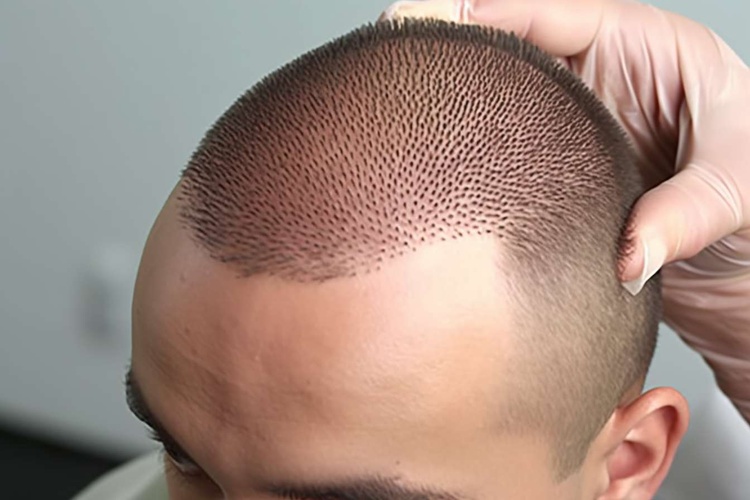Key Insights from Hair Transplant Clinical Trials in 2025
Hair transplant procedures have advanced significantly over the years, with clinical trials playing a crucial role in improving techniques and outcomes. In 2025, new trials are focusing on enhancing the effectiveness, minimizing recovery time, and expanding the accessibility of hair restoration treatments. This article discusses key insights from the latest clinical trials, such as improvements in follicular unit extraction (FUE), the use of stem cell technology, and the role of personalized treatments for better hair growth results. It also examines the potential for non-invasive treatments and the future of hair restoration.

How have follicular unit extraction techniques improved?
Follicular unit extraction (FUE) has long been a cornerstone of hair transplantation, but recent clinical trials have pushed the boundaries of this technique. In 2025, researchers have focused on refining the extraction process to minimize scarring and improve graft survival rates. Advanced imaging technologies now allow surgeons to map and target the most viable follicles with unprecedented precision. This not only enhances the overall success rate of transplants but also reduces recovery time for patients.
What role does stem cell technology play in hair restoration?
Stem cell hair treatment has emerged as a game-changer in the field of hair restoration. Clinical trials in 2025 have demonstrated remarkable progress in using stem cells to regenerate hair follicles. By isolating and cultivating hair follicle stem cells, researchers have developed methods to induce new hair growth in previously barren areas. This approach shows promise for patients with extensive hair loss who may not have been suitable candidates for traditional transplant methods.
How are personalized treatments improving outcomes?
One of the most significant insights from recent hair transplant clinical trials is the importance of personalized treatments. Researchers have found that tailoring procedures to individual genetic profiles, scalp conditions, and hair types can dramatically improve results. Advanced diagnostic tools now allow clinicians to create bespoke treatment plans, optimizing graft placement and post-operative care for each patient.
What advancements have been made in non-invasive treatments?
While surgical hair transplantation remains effective, 2025 hair restoration research has also focused on developing non-invasive alternatives. Clinical trials have explored the use of low-level laser therapy, platelet-rich plasma injections, and topical treatments that stimulate dormant follicles. These non-surgical options offer potential solutions for patients who are not ready or suitable for transplant surgery.
How has recovery time been reduced for transplant patients?
A key focus of hair transplant trials in 2025 has been on minimizing recovery time and improving patient comfort. Innovations in surgical techniques, such as robotic-assisted transplantation and micro-incision methods, have significantly reduced post-operative healing periods. Additionally, trials have explored novel wound-healing agents that accelerate recovery and minimize the risk of complications.
What are the latest breakthroughs in hair transplantation technology?
The latest breakthroughs in hair transplantation technology showcase the rapid evolution of the field. Clinical trials have explored the use of 3D-printed hair follicles, which could potentially provide an unlimited source of transplantable hair. Another exciting development is the use of artificial intelligence to optimize graft placement and predict long-term outcomes. These technological advancements promise to make hair transplantation more efficient, effective, and accessible to a broader range of patients.
| Technology | Key Features | Potential Impact |
|---|---|---|
| 3D-Printed Follicles | Unlimited supply, customizable | Addresses donor hair limitations |
| AI-Assisted Placement | Optimal graft positioning, outcome prediction | Improves natural-looking results |
| Robotic FUE | Precision extraction, reduced fatigue | Enhances consistency and efficiency |
| Stem Cell Therapy | Regenerates new follicles | Suitable for extensive hair loss |
Prices, rates, or cost estimates mentioned in this article are based on the latest available information but may change over time. Independent research is advised before making financial decisions.
In conclusion, the insights from hair transplant clinical trials in 2025 paint an exciting picture for the future of hair restoration. From advancements in follicular unit extraction to the integration of stem cell technology and personalized treatments, the field is rapidly evolving. Non-invasive options and reduced recovery times are making hair restoration more accessible, while cutting-edge technologies like 3D-printed follicles and AI-assisted procedures are pushing the boundaries of what’s possible. As research continues, patients can look forward to even more effective, natural-looking, and tailored solutions for hair loss.
This article is for informational purposes only and should not be considered medical advice. Please consult a qualified healthcare professional for personalized guidance and treatment.




